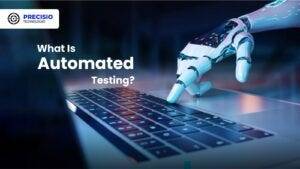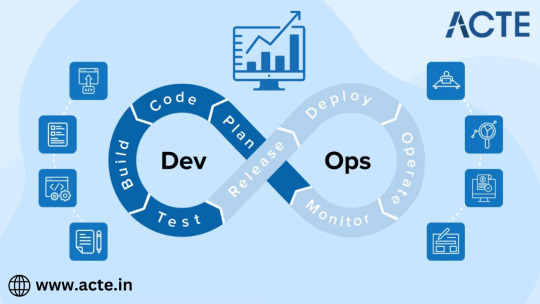#custom software disadvantages
Explore tagged Tumblr posts
Text
Custom Software vs. Off-the-Shelf Solutions: What’s Best for Your Startup?
Struggling to choose between custom software and off-the-shelf solutions for your startup? Explore the pros and cons of each option in our comprehensive guide, and discover which approach best aligns with your business goals and budget.
#advantages of custom software#advantages of off-the-shelf solutions#business process automation#business software#competitive edge software#cost of custom software#custom software#custom software advantages#custom software disadvantages#custom vs. off-the-shelf software#disadvantages of off-the-shelf solutions#hybrid software approach#integration solutions#it consulting services#it solutions for startups#off-the-shelf software benefits#off-the-shelf solutions#quick implementation software#ready-made software solutions#security in software solutions#software customization#software development for startups#software development timeframe#software scalability#startup software solutions#tailor-made software#tech trends for startups#technology stack for startups#technology strategy#proprietary software vs off the shelf software
0 notes
Text
⭐ So you want to learn pixel art? ⭐
🔹 Part 1 of ??? - The Basics!
Edit: Now available in Google Doc format if you don't have a Tumblr account 🥰
Hello, my name is Tofu and I'm a professional pixel artist. I have been supporting myself with freelance pixel art since 2020, when I was let go from my job during the pandemic.


My progress, from 2017 to 2024. IMO the only thing that really matters is time and effort, not some kind of natural talent for art.
This guide will not be comprehensive, as nobody should be expected to read allat. Instead I will lean heavily on my own experience, and share what worked for me, so take everything with a grain of salt. This is a guide, not a tutorial. Cheers!
🔹 Do I need money?
NO!!! Pixel art is one of the most accessible mediums out there.
I still use a mouse because I prefer it to a tablet! You won't be at any disadvantage here if you can't afford the best hardware or software.
Because our canvases are typically very small, you don't need a good PC to run a good brush engine or anything like that.
✨Did you know? One of the most skilled and beloved pixel artists uses MS PAINT! Wow!!
🔹 What software should I use?
Here are some of the most popular programs I see my friends and peers using. Stars show how much I recommend the software for beginners! ⭐
💰 Paid options:
⭐⭐⭐ Aseprite (for PC) - $19.99
This is what I and many other pixel artists use. You may find when applying to jobs that they require some knowledge of Aseprite. Since it has become so popular, companies like that you can swap raw files between artists.
Aseprite is amazingly customizable, with custom skins, scripts and extensions on Itch.io, both free and paid.
If you have ever used any art software before, it has most of the same features and should feel fairly familiar to use. It features a robust animation suite and a tilemap feature, which have saved me thousands of hours of labour in my work. The software is also being updated all the time, and the developers listen to the users. I really recommend Aseprite!
⭐ Photoshop (for PC) - Monthly $$
A decent option for those who already are used to the PS interface. Requires some setup to get it ready for pixel-perfect art, but there are plenty of tutorials for doing so.
Animation is also much more tedious on PS which you may want to consider before investing time!
⭐⭐ ProMotion NG (for PC) - $19.00
An advanced and powerful software which has many features Aseprite does not, including Colour Cycling and animated tiles.
⭐⭐⭐ Pixquare (for iOS) - $7.99 - $19.99 (30% off with code 'tofu'!!)
Probably the best app available for iPad users, in active development, with new features added all the time.

Look! My buddy Jon recommends it highly, and uses it often.
One cool thing about Pixquare is that it takes Aseprite raw files! Many of my friends use it to work on the same project, both in their office and on the go.
⭐ Procreate (for iOS) - $12.99
If you have access to Procreate already, it's a decent option to get used to doing pixel art. It does however require some setup. Artist Pixebo is famously using Procreate, and they have tutorials of their own if you want to learn.
⭐⭐ ReSprite iOS and Android. (free trial, but:) $19.99 premium or $$ monthly
ReSprite is VERY similar in terms of UI to Aseprite, so I can recommend it. They just launched their Android release!
🆓 Free options:
⭐⭐⭐ Libresprite (for PC)
Libresprite is an alternative to Aseprite. It is very, very similar, to the point where documentation for Aseprite will be helpful to Libresprite users.
⭐⭐ Pixilart (for PC and mobile)
A free in-browser app, and also a mobile app! It is tied to the website Pixilart, where artists upload and share their work. A good option for those also looking to get involved in a community.
⭐⭐ Dotpict (for mobile)
Dotpict is similar to Pixilart, with a mobile app tied to a website, but it's a Japanese service. Did you know that in Japanese, pixel art is called 'Dot Art'? Dotpict can be a great way to connect with a different community of pixel artists! They also have prompts and challenges often.
🔹 So I got my software, now what?
◽Nice! Now it's time for the basics of pixel art.
❗ WAIT ❗ Before this section, I want to add a little disclaimer. All of these rules/guidelines can be broken at will, and some 'no-nos' can look amazing when done intentionally.
The pixel-art fundamentals can be exceedingly helpful to new artists, who may feel lost or overwhelmed by choice. But if you feel they restrict you too harshly, don't force yourself! At the end of the day it's your art, and you shouldn't try to contort yourself into what people think a pixel artist 'should be'. What matters is your own artistic expression. 💕👍
◽Phew! With that out of the way...
🔸"The Rules"
There are few hard 'rules' of pixel art, mostly about scaling and exporting. Some of these things will frequently trip up newbies if they aren't aware, and are easy to overlook.
🔹Scaling method
There are a couple ways of scaling your art. The default in most art programs, and the entire internet, is Bi-linear scaling, which usually works out fine for most purposes. But as pixel artists, we need a different method.


Both are scaled up x10. See the difference?
On the left is scaled using Bilinear, and on the right is using Nearest-Neighbor. We love seeing those pixels stay crisp and clean, so we use nearest-neighbor.
(Most pixel-art programs have nearest-neighbor enabled by default! So this may not apply to you, but it's important to know.)
🔹Mixels
Mixels are when there are different (mixed) pixel sizes in the same image.


Here I have scaled up my art- the left is 200%, and the right is 150%. Yuck!
As we can see, the "pixel" sizes end up different. We generally try to scale our work by multiples of 100 - 200%, 300% etc. rather than 150%. At larger scales however, the minute differences in pixel sizes are hardly noticeable!
Mixels are also sometimes seen when an artist scales up their work, then continues drawing on it with a 1 pixel brush.

Many would say that this is not great looking! This type of pixels can be indicative of a beginner artist. But there are plenty of creative pixel artists out there who mixels intentionally, making something modern and cool.
🔹Saving Your Files
We usually save our still images as .PNGs as they don’t create any JPEG artifacts or loss of quality. It's a little hard to see here, but there are some artifacts, and it looks a little blurry. It also makes the art very hard to work with if we are importing a JPEG.

For animations .GIF is good, but be careful of the 256 colour limit. Try to avoid using too many blending mode layers or gradients when working with animations. If you aren’t careful, your animation could flash afterwards, as the .GIF tries to reduce colours wherever it can. It doesn’t look great!

Here's an old piece from 2021 where I experienced .GIF lossiness, because I used gradients and transparency, resulting in way too many colours.
🔹Pixel Art Fundamentals - Techniques and Jargon
❗❗Confused about Jaggies? Anti-Aliasing? Banding? Dithering? THIS THREAD is for you❗❗ << it's a link, click it!!
As far as I'm concerned, this is THE tutorial of all time for understanding pixel art. These are techniques created and named by the community of people who actually put the list together, some of the best pixel artists alive currently. Please read it!!
🔸How To Learn
Okay, so you have your software, and you're all ready to start. But maybe you need some more guidance? Try these tutorials and resources! It can be helpful to work along with a tutorial until you build your confidence up.
⭐⭐ Pixel Logic (A Digital Book) - $10 A very comprehensive visual guide book by a very skilled and established artist in the industry. I own a copy myself.
⭐⭐⭐ StudioMiniBoss - free A collection of visual tutorials, by the artist that worked on Celeste! When starting out, if I got stuck, I would go and scour his tutorials and see how he did it.
⭐ Lospec Tutorials - free A very large collection of various tutorials from all over the internet. There is a lot to sift through here if you have the time.
⭐⭐⭐ Cyangmou's Tutorials - free (tipping optional) Cyangmou is one of the most respected and accomplished modern pixel artists, and he has amassed a HUGE collection of free and incredibly well-educated visual tutorials. He also hosts an educational stream every week on Twitch called 'pixelart for beginners'.
⭐⭐⭐ Youtube Tutorials - free There are hundreds, if not thousands of tutorials on YouTube, but it can be tricky to find the good ones. My personal recommendations are MortMort, Brandon, and AdamCYounis- these guys really know what they're talking about!
🔸 How to choose a canvas size
When looking at pixel art turorials, we may see people suggest things like 16x16, 32x32 and 64x64. These are standard sizes for pixel art games with tiles. However, if you're just making a drawing, you don't necessarily need to use a standard canvas size like that.
What I like to think about when choosing a canvas size for my illustrations is 'what features do I think it is important to represent?' And make my canvas as small as possible, while still leaving room for my most important elements.
Imagine I have characters in a scene like this:

I made my canvas as small as possible (232 x 314), but just big enough to represent the features and have them be recognizable (it's Good Omens fanart 😤)!! If I had made it any bigger, I would be working on it for ever, due to how much more foliage I would have to render.
If you want to do an illustration and you're not sure, just start at somewhere around 100x100 - 200x200 and go from there.
It's perfectly okay to crop your canvas, or scale it up, or crunch your art down at any point if you think you need a different size. I do it all the time! It only takes a bit of cleanup to get you back to where you were.
🔸Where To Post
Outside of just regular socials, Twitter, Tumblr, Deviantart, Instagram etc, there are a few places that lean more towards pixel art that you might not have heard of.
⭐ Lospec Lospec is a low-res focused art website. Some pieces get given a 'monthly masterpiece' award. Not incredibly active, but I believe there are more features being added often.
⭐⭐ Pixilart Pixilart is a very popular pixel art community, with an app tied to it. The community tends to lean on the young side, so this is a low-pressure place to post with an relaxed vibe.
⭐⭐ Pixeljoint Pixeljoint is one of the big, old-school pixel art websites. You can only upload your art unscaled (1x) because there is a built-in zoom viewer. It has a bit of a reputation for being elitist (back in the 00s it was), but in my experience it's not like that any more. This is a fine place for a pixel artist to post if they are really interested in learning, and the history. The Hall of Fame has some of the most famous / impressive pixel art pieces that paved the way for the work we are doing today.
⭐⭐⭐ Cafe Dot Cafe Dot is my art server so I'm a little biased here. 🍵 It was created during the recent social media turbulence. We wanted a place to post art with no algorithms, and no NFT or AI chuds. We have a heavy no-self-promotion rule, and are more interested in community than skill or exclusivity. The other thing is that we have some kind of verification system- you must apply to be a Creator before you can post in the Art feed, or use voice. This helps combat the people who just want to self-promo and dip, or cause trouble, as well as weed out AI/NFT people. Until then, you are still welcome to post in any of the threads or channels. There is a lot to do in Cafe Dot. I host events weekly, so check the threads!
⭐⭐/r/pixelart The pixel art subreddit is pretty active! I've also heard some of my friends found work through posting here, so it's worth a try if you're looking. However, it is still Reddit- so if you're sensitive to rude people, or criticism you didn't ask for, you may want to avoid this one. Lol
🔸 Where To Find Work
You need money? I got you! As someone who mostly gets scouted on social media, I can share a few tips with you:
Put your email / portfolio in your bio Recruiters don't have all that much time to find artists, make it as easy as possible for someone to find your important information!
Clean up your profile If your profile feed is all full of memes, most people will just tab out rather than sift through. Doesn't apply as much to Tumblr if you have an art tag people can look at.
Post regularly, and repost Activity beats everything in the social media game. It's like rolling the dice, and the more you post the more chances you have. You have to have no shame, it's all business baby
Outside of just posting regularly and hoping people reach out to you, it can be hard to know where to look. Here are a few places you can sign up to and post around on.
/r/INAT INAT (I Need A Team) is a subreddit for finding a team to work with. You can post your portfolio here, or browse for people who need artists.
/r/GameDevClassifieds Same as above, but specifically for game-related projects.
Remote Game Jobs / Work With Indies Like Indeed but for game jobs. Browse them often, or get email notifications.
VGen VGen is a website specifically for commissions. You need a code from another verified artist before you can upgrade your account and sell, so ask around on social media or ask your friends. Once your account is upgraded, you can make a 'menu' of services people can purchase, and they send you an offer which you are able to accept, decline, or counter.
The evil websites of doom: Fiverr and Upwork I don't recommend them!! They take a big cut of your profit, and the sites are teeming with NFT and AI people hoping to make a quick buck. The site is also extremely oversaturated and competitive, resulting in a race to the bottom (the cheapest, the fastest, doing the most for the least). Imagine the kind of clients who go to these websites, looking for the cheapest option. But if you're really desperate...
🔸 Community
I do really recommend getting involved in a community. Finding like-minded friends can help you stay motivated to keep drawing. One day, those friends you met when you were just starting out may become your peers in the industry. Making friends is a game changer!
Discord servers Nowadays, the forums of old are mostly abandoned, and people split off into many different servers. Cafe Dot, Pixel Art Discord (PAD), and if you can stomach scrolling past all the AI slop, you can browse Discord servers here.
Twitch Streams Twitch has kind of a bad reputation for being home to some of the more edgy gamers online, but the pixel art community is extremely welcoming and inclusive. Some of the people I met on Twitch are my friends to this day, and we've even worked together on different projects! Browse pixel art streams here, or follow some I recommend: NickWoz, JDZombi, CupOhJoe, GrayLure, LumpyTouch, FrankiePixelShow, MortMort, Sodor, NateyCakes, NyuraKim, ShinySeabass, I could go on for ever really... There are a lot of good eggs on Pixel Art Twitch.
🔸 Other Helpful Websites
Palettes Lospec has a huge collection of user-made palettes, for any artist who has trouble choosing their colours, or just wants to try something fun. Rejected Palettes is full of palettes that didn't quite make it onto Lospec, ran by people who believe there are no bad colours.
The Spriters Resource TSR is an incredible website where users can upload spritesheets and tilesets from games. You can browse for your favourite childhood game, and see how they made it! This website has helped me so much in understanding how game assets come together in a scene.
VGMaps Similar to the above, except there are entire maps laid out how they would be played. This is incredible if you have to do level design, or for mocking up a scene for fun.
Game UI Database Not pixel-art specific, but UI is a very challenging part of graphics, so this site can be a game-changer for finding good references!
Retronator A digital newspaper for pixel-art lovers! New game releases, tutorials, and artworks!
Itch.io A website where people can upload, games, assets, tools... An amazing hub for game devs and game fans alike. A few of my favourite tools: Tiled, PICO-8, Pixel Composer, Juice FX, Magic Pencil for Aseprite
🔸 The End?
This is just part 1 for now, so please drop me a follow to see any more guides I release in the future. I plan on doing some writeups on how I choose colours, how to practise, and more!
I'm not an expert by any means, but everything I did to get to where I am is outlined in this guide. Pixel art is my passion, my job and my hobby! I want pixel art to be recognized everywhere as an art-form, a medium of its own outside of game-art or computer graphics!

This guide took me a long time, and took a lot of research and experience. Consider following me or supporting me if you are feeling generous.
And good luck to all the fledgling pixel artists, I hope you'll continue and have fun. I hope my guide helped you, and don't hesitate to send me an ask if you have any questions! 💕
My other tutorials (so far): How to draw Simple Grass for a game Hue Shifting
28K notes
·
View notes
Text
I got a Steam Deck last year, and it’s such a great machine. It’s obviously inspired by Nintendo Switch, but it’s a lot better than a Switch.
The most important part is that it runs PC games. It’s fundamentally a Linux gaming PC in the form of a handheld console. There are a lot more games available than any console and and PC games both on Steam and GOG are a lot cheaper than console ones. You can get old or indie games for as cheap as 1-3 euro during sales. It’s a tremendous advantage for the deck over its console competitors.
And while the obvious intent of the deck is to get more people to buy games from Steam, it isn’t a walled garden at all. The deck launches into Steam when you boot it up, but you can go into desktop mode, and then it functions as a normal PC running a Linux distro. From there you can install Lutris or Heroic Games Launcher, and use it to easily install games you bought from GOG and Itch.io.
You can also do things like use the official dock or an unofficial usb-c hub to hook the deck up to a monitor, mouse and keyboard to use it as a desktop PC. Or you can hook it up to a tv to use it as home console.
The hardware is also a lot more powerful than a switch, the demanding triple-a games it can play is actually impressive. Although this comes with the natural disadvantage that it’s bulkier too. Putting more powerful PC parts demands more space for them. The deck is not something I bring with me outside. But then again I didn’t even do that with the 3DS, which was actually of a practical size to do that. The deck is portable enough that I can comfortably play lying in bed, which is how I always used my handheld consoles. So it’s perfect for me, but maybe not if you want to play it on the bus or something. It can probably be a fun addition to your luggage on longer trips though.
Of course, as mentioned, the Steam Deck uses Linux. This has both advantages and disadvantages. The main advantage is that it allows Valve to customize the operating system to make it fit with the machine it’s running on. The Deck’s SteamOS feels really well-integrated into the hardware, like how a proper console OS should be like. It’s not that dissimilar to how Sony used FreeBSD to make Playstation’s OS. Windows would not allow for this amount of customization and would not integrate as well.
And the open source nature of most Linux development allows Valve and the user to use existing open-source Linux software to their advantage. For example, the desktop mode is largely not a Valve creation, it’s an existing desktop environment for Linux, KDE Plasma. Yet it extends what the user can do with the deck to a great extent, like for installing non-steam games.
The main disadvantage to the Deck using Linux is that most PC games are built for Windows and don’t run natively under Linux. To run games built for Windows, the Deck has to run it through Proton, a compatibility layer which is Valve’s own gaming-focused version of Wine. Wine/Proton is far from perfect, sometimes games require extensive tinkering to work, or only run with serious issues, or don’t run at all, no matter what you do. Sometimes a game not working with Wine due to some random but serious issue that comes naturally from running a Windows executable on a Linux system via a compatibility layer. Sometimes it’s due to things like a multiplayer’s game anti-cheat system requiring access to the Windows kernel, and it will block a Linux pc from running the game because it has no Windows kernel.
This is however not as big a problem as it might otherwise be. Most games work, more or less. Valve has put a lot of work and money into both their own Proton and the Wine project as a whole, and they work a lot better than they did 10 years ago. Many run perfectly out of the box, because they are native, or play nice with Proton. Some require mere minor tinkering, like using a different version of Proton. And I generally don’t play multiplayer games, or if I do they don’t have draconian anti-cheats, so the games that are blocked because of anti-cheat are no big loss to me. The Steam Deck not running Fortnite is a plus in my book.
And we shouldn’t forget the Steam Deck verified system. Basically Valve employees check if the game runs out of the box with no issues on the Deck. They get a verified rating if they work with no issue, including both proton compatibility but also things like the controls working nice and the text being legible on the deck’s small screen. They also get a “playable” rating if the game runs to an acceptable standard but with tinkering required or other minor issues.
This is a good system. If you dislike tinkering, you can just buy and play games on steam with a verified rating, and the deck will work like a normal console for you, but with a lot cheaper games. It’s a good way to get people used to consoles into PC gaming, which is probably the point of the Deck.
And if you want more than deck verified games from Steam on the Deck, you are given the freedom to do it. I’ve gotten officially non-supported steam games to run on the deck by installing and using proton-GE and I’ve installed and played games from GOG.
The Steam Deck is really how a Linux PC for the common people should work. An easy and slick experience for casual users, but freedom and customization given to those that want it.
82 notes
·
View notes
Text
Automated Testing vs. Manual Testing: Which One is Right for Your Project?

Achieving high-quality, reliable software stands as a fundamental requirement in software development. Successful testing functions as an essential tool to discover faults and build performance capabilities that create better user experience outcomes. Two main testing methods dominate the field: automated testing and manual testing. The process of quality software assurance uses different testing approaches that demonstrate their own advantages as well as weaknesses according to specific project requirements and scenarios. We will explore the specifics to determine which testing process works best for your system development efforts.
1. What Is Manual Testing?

Manual testing involves a human tester manually executing test cases without using automation tools. Key Characteristics:
The methodology focuses its efforts on user interface together with usability and experience testing.
Human-centered applications where selection requires discretion include ad hoc testing and enumerative testing as well as examinations that need human evaluation.
Human performers are required during this approach; thus, it demands substantial time.
2. What Is Automated Testing?

Software performing automated testing executes test cases through workflows and helpers. Key Characteristics:
Efficient for repetitive and regression testing.
Users must spend money on tools along with developing custom scripts for testing.
Reduces human error.
3. Advantages of Manual Testing

Human Intuition: Software testing professionals can detect kernels through their human cognitive ability that automated tools cannot match. The observation and evaluation of visual elements runs more efficiently through human operatives instead of advanced tools.
Flexibility: This method suits exploratory testing specifically because there are no pre-determined scripts available.
Low Initial Investment: Running this approach does not need tool purchases or applications to develop automation frameworks.
Adaptable for UI/UX Testing: Running this approach does not need tool purchases or applications to develop automation frameworks.
4. Advantages of Automated Testing

Speed: Executes repetitive tests much faster than humans.
Scalability: The system proves most effective for extensive projects that need constant system updates.
Accuracy: When performing recurring actions, automated systems minimize the chances of human mistakes.
Cost-Efficient in the Long Run: Once established and implemented, the system demands costly investments but ensures continuous development expenses decrease over time.
Better for CI/CD Pipelines: Such testing technology connects various development pipelines that support agile and DevOps methodologies.
5. Disadvantages of Manual Testing

Time-Consuming: The manual performance of repeated tests leads to delayed completion of projects.
Error-Prone: Large applications contain tiny bugs that human testers commonly fail to detect.
Not Ideal for Scalability: The process of increasing manual testing needs additional testers to avoid cost escalations.
6. Disadvantages of Automated Testing

Initial Costs: Organizations must provide high financial resources to procure testing tools together with developing programming constructs.
Limited to Pre-Defined Scenarios: These testing approaches work poorly for handling exploratory or ad hoc testing.
Requires Maintenance: Test scripts need frequent updates when application changes occur.
Not Suitable for UI/UX Testing: Struggles with subjective user experience evaluations.
7. When to Use Manual Testing

Small Projects: The testing method proves beneficial at a low cost for small applications and provides quick assessments.
Exploratory Testing: Testing this approach benefits projects whose scripts have not been defined yet or need evaluation for newly added features.
Visual and Usability Testing: Performing assessments on interface components together with design features.
8. When to Use Automated Testing

Large Projects: Handles scalability for projects with frequent updates.
Regression Testing: Program testing becomes more efficient through automation since automated assessments perform multiple tests following each update process.
Performance Testing: The system performs efficient capabilities to conduct load testing and stress testing.
Continuous Development Environments: Agile progression and DevOps implementations need automation as a core requirement.
READ MORE- https://www.precisio.tech/automated-testing-vs-manual-testing-which-one-is-right-for-your-project/
2 notes
·
View notes
Text
12 Advantages and Disadvantages of ECommerce | Imagency Media
The rapid growth of eCommerce has transformed the way businesses operate, bringing both remarkable advantages and notable challenges. Understanding these can help businesses leverage eCommerce to its fullest potential or address its drawbacks effectively. Let’s dive into 12 key advantages and disadvantages of eCommerce.

Advantages of eCommerce
Global Reach eCommerce breaks down geographical barriers, allowing businesses to reach customers worldwide. This expansive reach helps businesses tap into new markets and grow their customer base beyond local limitations.

Lower Operational Costs Running an online store can be significantly cheaper than maintaining a physical storefront. Costs like rent, utilities, and staffing are greatly reduced, allowing businesses to reinvest savings into marketing and product development.
24/7 Availability Unlike traditional stores, eCommerce sites operate round the clock. This availability caters to customers in different time zones, providing a seamless shopping experience anytime, anywhere.
Personalization and Customer Experience eCommerce platforms can gather data on customer behavior, preferences, and purchase history, allowing businesses to offer personalized recommendations and improve the overall shopping experience.

Easy Scaling and Growth Scaling an online business is much simpler than expanding a brick-and-mortar store. Adding new products or services, targeting new demographics, and adjusting to market demands can be done quickly and efficiently.
Enhanced Marketing Opportunities Digital marketing strategies such as social media advertising, email marketing, and SEO are particularly effective for eCommerce. These channels allow businesses to target specific audiences and track results in real-time.
Disadvantages of eCommerce
Lack of Personal Touch Despite technological advances, online shopping often lacks the personal interaction found in physical stores. This absence of human touch can make it harder to build customer loyalty.
Security and Privacy Concerns With the rise in cybercrime, protecting customer data is a major concern for eCommerce businesses. Ensuring robust security measures is critical but can be costly and complex.

Dependence on Technology eCommerce heavily relies on technology, including websites, payment gateways, and software. Technical glitches, downtime, or slow-loading pages can lead to lost sales and damage to the brand’s reputation.
High Competition and Price Wars The ease of starting an online store has led to increased competition, making it difficult for smaller businesses to stand out. Price wars are common, often squeezing profit margins.
Shipping and Logistics Challenges While eCommerce allows businesses to reach a global audience, shipping products efficiently can be complex and costly. Issues like delayed deliveries, high shipping fees, and logistics mishaps can affect customer satisfaction.

Difficulty in Handling Returns and Refunds Returns are more prevalent in eCommerce, especially in fashion and electronics sectors. Handling returns and refunds can be costly and time-consuming, often eroding profit margins.
Conclusion
eCommerce offers vast opportunities for growth, flexibility, and global reach, but it also comes with challenges that businesses must address. By understanding these advantages and disadvantages, companies can better strategize and create a seamless, customer-friendly eCommerce experience.
Contact us
Imagency Media can help you navigate the eCommerce landscape, providing expert insights and tailored solutions to maximize your online success.
#digital services#digital marketing#social media marketing#business#marketing#google ads#ecommerce business#ecommerce
4 notes
·
View notes
Text
DevOps: Balancing the Scales of Advantages and Challenges
In the ever-evolving landscape of technology, the term "DevOps" has become more than just a buzzword; it's a transformative force that's reshaping the way software is developed and delivered. DevOps, a fusion of "development" and "operations," represents a seismic shift in the world of software engineering and IT operations. It's not just a methodology; it's a cultural movement aimed at achieving agility, collaboration, and efficiency in the modern tech ecosystem.

In this comprehensive guide, we'll explore the essential aspects of DevOps, including why it's a necessity in today's technology-driven world. We'll delve into the advantages and disadvantages of DevOps practices and their impact on businesses.
Why DevOps is a Necessity Today
In the fast-paced and dynamic world of technology, businesses can't afford the delays and bottlenecks that traditional software development and deployment processes often entail. DevOps emerges as the solution to this challenge, bridging the gap between the two historically distinct domains of software development and IT operations.
The need for DevOps is driven by several critical factors:
Agility: Modern businesses must respond swiftly to changing customer needs and market trends. DevOps practices empower organizations to deliver software faster and respond more effectively to shifts in the market.
Quality: Customer expectations are at an all-time high. High-quality software with minimal bugs and issues is not just a preference; it's an expectation. DevOps practices, such as continuous integration and continuous delivery (CI/CD), are designed to improve software quality.
Efficiency: The automation of repetitive tasks in the software development and deployment process leads to greater efficiency and reduced manual errors. This automation also cuts operational costs.
Collaboration: DevOps promotes cross-functional collaboration between traditionally siloed development and operations teams. It breaks down communication barriers and fosters a more efficient exchange of ideas and information.
Scalability: The ability to scale infrastructure and applications quickly and efficiently is crucial in a rapidly changing tech landscape. DevOps practices facilitate this scalability.
The Advantages of DevOps
DevOps offers a multitude of benefits, making it a compelling choice for businesses looking to streamline their software development and deployment processes.
Faster Delivery: One of the most significant advantages of DevOps is the acceleration of the development, testing, and deployment of software. This leads to a substantial reduction in time-to-market.
Improved Collaboration: DevOps eliminates the silos that traditionally separated development and operations teams. Enhanced collaboration and communication lead to more efficient workflows and processes.
Enhanced Quality: Continuous integration and continuous delivery practices in DevOps result in higher-quality software with fewer bugs and issues. This directly contributes to greater customer satisfaction.
Efficiency: Automation of repetitive tasks and processes improves efficiency, reduces manual errors, and cuts operational costs. The cost-effectiveness of DevOps is a significant advantage for organizations.

The Disadvantages of DevOps
While the advantages of DevOps are clear and compelling, it's essential to recognize that there are challenges and potential disadvantages associated with its adoption.
Initial Learning Curve: Implementing DevOps practices and tools can be challenging, particularly for teams and individuals who are accustomed to traditional software development and IT operations processes. There is a learning curve associated with the adoption of DevOps practices.
Cost: Setting up and maintaining DevOps practices and tools can be costly, especially for small businesses. The initial investment in infrastructure and training can be a barrier for some organizations.
Security Concerns: DevOps emphasizes speed and automation, which can sometimes come at the expense of security. While security is a fundamental aspect of DevOps, there may be concerns about the potential trade-offs between speed and security. Organizations must place a strong emphasis on security within their DevOps practices.
Resistance to Change: DevOps represents a cultural shift within organizations. Employees may resist changes to traditional ways of working, and there can be resistance to new processes and tools.
In conclusion, DevOps is not just a methodology; it's a necessity in today's tech-driven world. It offers numerous advantages, including faster delivery, improved collaboration, enhanced quality, efficiency, and scalability. While there are challenges associated with its adoption, the benefits of DevOps far outweigh the disadvantages.
If you're considering a career in DevOps, there's no better time to embark on this transformative journey. DevOps professionals are in high demand, and their expertise is instrumental in driving the success of modern businesses. To prepare for a successful career in DevOps, it's crucial to acquire the right skills and knowledge.
This is where ACTE Technologies comes into play. With their comprehensive training programs and expert guidance, you can gain the skills and hands-on experience needed to excel in the field of DevOps. Their courses are tailored to provide you with a deep understanding of DevOps practices, tools, and methodologies. Whether you're starting from scratch or looking to enhance your existing skills, ACTE Technologies is your trusted partner on the path to a rewarding DevOps career. Embrace the DevOps revolution and be at the forefront of software delivery transformation.
12 notes
·
View notes
Text
Navigating the Pros and Cons of Selenium for Web Application Testing
Introduction: In the dynamic world of software development, automated testing is a cornerstone of ensuring product quality and reliability. Among the myriad of tools available for automated testing, Selenium stands out as a leading choice for testing web applications. In this comprehensive exploration, we'll dissect the advantages and disadvantages of Selenium, providing insights to aid in your decision-making process when selecting a testing tool.

Advantages of Selenium:
Cross-Browser Compatibility: Selenium boasts seamless compatibility across various web browsers, including Chrome, Firefox, Safari, and Internet Explorer. This ensures consistent performance and functionality across diverse platforms, enhancing the overall user experience.
Open-Source Foundation: Selenium's open-source nature not only makes it freely accessible but also fosters a collaborative community of developers. This community-driven approach facilitates continuous improvement and innovation, ensuring that Selenium remains at the forefront of automated testing technology.
Flexibility in Language Support: Selenium supports multiple programming languages, such as Java, Python, C#, Ruby, and JavaScript. This versatility empowers testers to leverage their language of choice, enhancing productivity and enabling seamless integration with existing workflows.
Integration with Testing Frameworks: Selenium seamlessly integrates with popular testing frameworks like TestNG, JUnit, and NUnit. This integration enhances test management capabilities and facilitates streamlined reporting, enabling efficient tracking of test results and issues.
Robust WebDriver API: Selenium's WebDriver API offers a robust and intuitive interface for automating web interactions. Testers can easily create and maintain test scripts, streamlining the testing process and minimizing manual effort.
Parallel Testing Capabilities: Selenium Grid enables parallel execution of tests across multiple browsers and environments. This parallel testing capability accelerates test execution, reduces time-to-market, and enhances test coverage, ultimately improving overall testing efficiency.
Extensive Ecosystem of Tools and Plugins: Selenium boasts an extensive ecosystem of tools and plugins that extend its functionality. From Selenium IDE for record-and-playback functionality to Selenium WebDriver for programmatic test automation, testers have access to a diverse range of tools to meet their specific testing needs.

Disadvantages of Selenium:
Limited Support for Desktop and Mobile Applications: Selenium primarily focuses on web application testing and may lack robust support for testing desktop and mobile applications. Testers may need to explore additional tools and frameworks to achieve comprehensive test coverage across diverse platforms.
Steep Learning Curve: Selenium's rich feature set and versatility may present a steep learning curve, particularly for novice testers. Mastering Selenium's APIs and best practices may require significant time and effort, potentially delaying the adoption and implementation of automated testing.
Dependency on Browser Automation: Selenium's reliance on browser automation exposes test scripts to potential fragility and failures. Changes in browser versions or website structures may necessitate frequent updates and maintenance of test scripts to ensure their reliability and effectiveness.
Lack of Built-In Reporting: Selenium lacks built-in reporting capabilities, requiring testers to rely on third-party tools or custom scripts for generating comprehensive test reports. This additional overhead may increase the complexity and maintenance of test automation frameworks.
Limited Support for Non-Web Technologies: While Selenium excels in web application testing, it may offer limited support for testing non-web technologies such as APIs, databases, and mobile devices. Testers may need to supplement Selenium with additional tools and frameworks to achieve comprehensive test coverage across diverse technologies.
Resource Intensive Execution: Executing tests with Selenium, especially in parallel or on cloud-based Selenium Grids, may be resource-intensive. Testers must ensure adequate infrastructure and resources to support the scalability and performance requirements of their automated testing efforts.
Conclusion: In conclusion, Selenium emerges as a powerful tool for automated testing of web applications, offering numerous advantages such as cross-browser compatibility, open-source accessibility, and robust WebDriver API. However, it also presents certain challenges and limitations, including a steep learning curve, dependency on browser automation, and limited support for non-web technologies.
By carefully evaluating the pros and cons of Selenium and considering your specific testing requirements, you can make informed decisions about whether Selenium aligns with your automated testing needs. Ultimately, Selenium remains a top choice for testers seeking to ensure the quality and reliability of web applications in today's fast-paced development landscape.
3 notes
·
View notes
Text
A Comprehensive Exploration of Selenium: A Double-Edged Sword in Software Testing
In the ever-evolving realm of software testing, Selenium has emerged as a dual-faced protagonist, offering a spectrum of advantages while presenting unique challenges. This blog takes a deep dive into the intricacies of Selenium, shedding light on both its strengths and potential pitfalls.

Unveiling Selenium's Strengths
Advantages:
Embrace Open-Source Freedom: Selenium's open-source nature liberates users from licensing constraints, fostering a community-driven ecosystem with widespread adoption and support.
Cross-Browser Harmony: Selenium's commendable support for major browsers ensures comprehensive testing, guaranteeing a seamless user experience across diverse platforms.
Multi-Language Versatility: The support for multiple programming languages allows testers to choose their preferred language, enhancing flexibility and catering to diverse project requirements.
Platform-Independent Prowess: Selenium's platform independence enables the creation of test scripts on one operating system and their seamless execution across different platforms, a testament to its adaptability.
Harmony with Testing Frameworks: Selenium's seamless integration with popular testing frameworks fosters structured and modular test script development, promoting organization and ease of maintenance.
Thriving Community Support: A robust community of developers and testers ensures a constant flow of resources, forums, and plugins, enriching the overall Selenium experience.
Parallel Execution Efficiency: Selenium's ability to execute test scripts in parallel is a time-saving feature, particularly valuable for large test suites and resource optimization.
Mobile Testing Proficiency: Beyond web applications, Selenium extends its support to mobile application testing through frameworks like Appium, making it a versatile choice for organizations engaging in both web and mobile development.

Navigating Selenium's Challenges
Disadvantages:
Navigating Windows Application Limits: Selenium's primary focus on web applications can be limiting for organizations heavily reliant on Windows-based applications.
Mastering the Learning Curve: Selenium demands a certain level of programming proficiency, potentially posing a challenge for individuals with limited coding experience.
Reporting Complexities: The absence of built-in reporting capabilities requires users to rely on third-party tools or custom frameworks, introducing an additional layer of complexity.
Visual Validation Hurdles: The lack of support for image-based testing may limit Selenium's application in scenarios where visual validation is paramount.
Captcha and Barcode Testing Constraints: Selenium faces challenges automating tests involving Captcha or barcode reading, potentially requiring human intervention.
Browser Version Sensitivity: Selenium WebDriver's dependency on browser versions introduces the risk of compatibility issues with script updates or changes in browser versions.
Mobile Testing Setup Complexity: Configuring Selenium for mobile testing across various platforms and devices can be intricate, necessitating additional tools and configurations.
Data Management Challenges: The absence of built-in test data management requires testers to handle data input and output through coding or external data sources.
Striking a Balance with Selenium
In summary, Selenium stands as a dynamic force in software testing, offering a range of advantages coupled with distinctive challenges. Achieving optimal results with Selenium requires a strategic approach, acknowledging both its strengths and limitations. Whether maximizing open-source freedom or addressing mobile testing complexities, organizations can leverage comprehensive training programs to harness Selenium's full potential.
As the software testing landscape evolves, Selenium remains a potent tool, demanding a nuanced understanding to navigate its complexities effectively. This exploration showcases Selenium as a double-edged sword, urging testers and developers to strike a delicate balance for a robust and efficient testing strategy.
2 notes
·
View notes
Text
The Value and Sustainability of Refurbished Laptops

In a world where technology is developing quickly, finding the right balance between performance and cost is crucial. Buying used laptops is one option that is becoming more and more common. But what does the term "refurbished" really mean, and how does it impact computer usage?
What Refurbished Computers Involve
Used laptops that have been meticulously restored to nearly new condition are called refurbished laptops. This calls for routine component testing, inspection, and replacement in order to maintain optimal functionality.
The following are some benefits of choosing refurbished computers: Refurbished laptops are typically significantly less expensive than new ones in terms of price.
Environmental Impact: Choosing a reconditioned laptop will help reduce the quantity of electronic waste that ends up in the environment.
Understanding the Renovation Process
Overview of Renovation
When the laptop is being refurbished, every part is carefully examined and checked. Any broken parts are located and replaced to ensure that the device meets quality standards.
Quality Assurance Metrics
Diagnostic testing: Comprehensive testing to identify any issues.
Component Replacement: Changing or improving current components to make sure they meet performance standards.
Changing Out Components
Used laptops are regularly upgraded with faster CPUs and more RAM, exceeding the original specifications in terms of performance.
Crucial Features to Consider When Buying a Refurbished Laptop
dependable suppliers
Make sure the suppliers you choose are trustworthy and have a good track record of offering high-quality reconditioned computers.
Return and warranty guidelines
Warranty Coverage: To provide protection against flaws, look for a warranty period.
Return Policies: Be aware of the conditions under which you can return a reconditioned laptop.
Comparison of Specifications
To determine whether a refurbished laptop is worth the money, compare its characteristics to those of new models.
Popular Models of Refurbished Laptops
Refurbished Dell Laptops
Explore the range of refurbished Dell laptops known for their reliability and performance.
Laptops Refurbished by HP
Explore the alternatives in the lineup of refurbished HP laptops that combine functionality and style.
Refurbished Laptops by Lenovo
Lenovo provides a wide selection of reconditioned laptops to meet various user requirements.
Savings and Value for Money: A Comparison of Prices for New Laptops
To determine the savings, compare the cost of refurbished laptops with those of new laptops.
Both affordability and performance
Refurbished laptops are a sensible option for customers on a tight budget since they frequently offer superior performance at a small fraction of the price of new equipment.
Environmental Impact and Sustainability
Cutting Down on E-Waste
Choosing a refurbished laptop helps lessen the impact that electrical waste from abandoned gadgets has on the environment.
Eco-Friendly Renovation Techniques
Find out what environmentally friendly methods refurbishing firms use to reduce their carbon footprint.
Reviews & Testimonials from Customers
Actual Refurbished Laptop User Experiences
Learn from consumers who have bought and utilized refurbished computers, emphasizing their own experiences.
Both positive and negative comments
Examine the advantages and disadvantages of reconditioned laptops based on user feedback.
Advice on How to Take Care of and Handle Refurbished Laptops Properly
To guarantee life and peak performance, maintain your reconditioned laptop according to recommended guidelines.
Security precautions and software updates
To safeguard your refurbished equipment, be cautious and update your software frequently. You should also put security measures in place.
In India, Refurbished Laptops Are Available
Expanding Pattern in India
Examine the growing demand for reconditioned laptops in the Indian market.
Best Selling Items and Brands
Find out which companies and top sellers in India are selling reconditioned laptops.
Obstacles and misunderstandings
Typical Untruths Regarding Refurbished Laptops
Examine and dispel popular misunderstandings about buying reconditioned laptops.
Resolving Customer Issues
Address the typical worries that customers might have when thinking about purchasing a reconditioned laptop.
Future Trends in the Refurbished Laptop Industry
Technological Advancements
Explore the anticipated technological advancements in the refurbishing process.
Market Forecasts
Analyze market forecasts for the expansion and development of reconditioned laptops.
Summary of the Benefits of Refurbished Laptops
List the main benefits of selecting reconditioned computers, highlighting their affordability and durability.
Encouragement of Knowledgeable Buying
Emphasize the advantages and debunk any misconceptions to help readers make well-informed judgments when thinking about purchasing a used laptop. Visit our site for more products at Retechie.
2 notes
·
View notes
Video
youtube
Kanban, Waterfall, and DevOps are three different approaches to project management and software development. Here's an overview of each concept: 1. Kanban: Definition: Kanban is a visual management method for software development and knowledge work. It originated from manufacturing processes in Toyota and has been adapted for use in software development to improve efficiency and flow.
Key Concepts: Visualization: Work items are represented on a visual board, usually with columns such as "To Do," "In Progress," and "Done."
Work in Progress (WIP) Limits: Limits are set on the number of items allowed in each column to optimize flow and avoid bottlenecks.
Continuous Delivery: Focus on delivering work continuously without distinct iterations.
Advantages: Flexibility in responding to changing priorities.
Continuous delivery of value. Visual representation of work enhances transparency.
Use Case: Kanban is often suitable for teams with variable and unpredictable workloads, where tasks don't follow a fixed iteration cycle.
2. Waterfall: Definition: The Waterfall model is a traditional and sequential approach to software development. It follows a linear and rigid sequence of phases, with each phase building upon the outputs of the previous one.
Phases: Requirements: Define and document project requirements. Design: Create the system architecture and design. Implementation: Code the system based on the design. Testing: Conduct testing to identify and fix defects. Deployment: Deploy the completed system to users. Maintenance: Provide ongoing support and maintenance.
Advantages:
Clear structure and well-defined phases.
Documentation at each stage.
Predictable timelines and costs.
Disadvantages: Limited flexibility for changes after the project starts.
Late feedback on the final product.
Risk of customer dissatisfaction if initial requirements are misunderstood.
Use Case: Waterfall is suitable for projects with well-defined requirements and stable environments where changes are expected to be minimal.
3. DevOps: Definition: DevOps (Development and Operations) is a set of practices that aim to automate and improve the collaboration between software development and IT operations. The goal is to shorten the development lifecycle, deliver high-quality software, and foster a culture of continuous integration and delivery.
Key Practices: Continuous Integration (CI): Merge code changes frequently and automatically test them.
Continuous Delivery/Deployment (CD): Automate the release and deployment processes.
Collaboration: Promote collaboration and communication between development and operations teams.
Advantages: Faster delivery of software. Reduced manual errors through automation. Improved collaboration and communication.
Use Case: DevOps is suitable for organizations aiming to achieve faster and more reliable delivery of software through the automation of development, testing, and deployment processes.
#mktmarketing4you #distributionchannels #HoshinPlanning #Leanmethods #marketing #M4Y #lovemarketing #IPAM #ipammarketingschool #Kanban #ContingencyPlanning #virtual #volunteering #project #Management #Economy #ConsumptionBehavior #BrandManagement #ProductManagement #Logistics #Lifecycle #Brand #Neuromarketing #McKinseyMatrix #Breakevenanalysis #innovation #Facebook #icebergmodel #EdgarScheinsCultureModel #STARMethod #VRIO #7SFramework #gapanalysis #AIDAModel #SixLeadershipStyles #MintoPyramidPrinciple #StrategyDiamond #InternalRateofReturn #irr #BrandManagement #dripmodel #HoshinPlanning #XMatrix #backtobasics #BalancedScorecard #Product #ProductManagement #Logistics #Branding #freemium #businessmodel #business #4P #3C #BCG #SWOT #TOWS #EisenhowerMatrix #Study #marketingresearch #marketer #marketing manager #Painpoints #Pestel #ValueChain # VRIO #marketingmix We also left a video about Lean vs Agile vs Waterfall | What is Lean | Difference between Waterfall and Agile and that could help you. Later we will leave one about Kanban:
2 notes
·
View notes
Text
Some Great Benefits Of Online Sms Verification Service

It is easy and quick to validate the authenticity of an individual by using SMS. This is a powerful security device that can help to prevent fraudulent transactions and increase customer satisfaction.
However, it's not an absolute method of authentication on its own. It could be utilized together with other methods to prevent fraud, and also methods of buyer verification.
Authentication
SMS authentication is an effective method of two-factor authentication because it's readily available for all mobile devices, and the majority of consumers are comfortable to the method. It also costs relatively little and doesn't require any extra hardware or software to implement.
The site is also extremely accessible, which allows customers to log in even if they're not on the internet. This helps reduce the possibility of a help desk call and gives users the confidence that their account is secure.
This adds a bit of friction when you the checkout. If they have to enter the code required to finish their purchase, customers may be annoyed and abandon their purchases. This could be an issue for merchants who need to balance the risk of fraud with the desire to create a seamless purchase experience to their customers. It is important to be aware that, by utilizing their fraud prevention methods, businesses can limit the amount and frequently SMS authentication is required.
Fraud Prevention
The constant war between fraudsters and prevention methods, hackers constantly come up with new ways to defeat two-factor authentication. Cybercriminals who attack famous sites for stealing passwords from databases are particularly vulnerable. The stolen passwords are extremely useful on the black market, and often utilized to access the accounts of customers across other websites that are logged in with the same password.
SMS verification is one way to stop these types account takeovers. It requires that users enter a code that is that is sent to their phone prior to logging in or make purchases. The use of this type of verification may also reduce the possibility of chargebacks resulting from stolen credit card details. However, SMS verification does provide another level of difficulty on the process of checkout and could discourage some customers from making purchases at all or even cause them abandon their cart. This is why merchants should carefully balance their need for security with the need to make their customers satisfied.
Efficiency
SMS verification might be the most popular form of two-factor authentication, because it doesn't require downloads of apps as well as QR codes. It's also a breeze to operate, and people from all ages are able to make use of their mobile phones. It's also affordable, and users don't need to purchase additional hardware or software as they do with other methods of verification.
But there are a few disadvantages to the use of phone number verification service. One is that it adds a layer of friction in the process of signing-in that could deter customers from making purchases or creating accounts. If they decide to utilize or not this method, merchants should weigh the advantages of fraud prevention over the benefits of keeping customers.
Certain websites, like provide free services that enable users to skip SMS confirmation. It's not the best idea. This doesn't make sense and could lead to security concerns for customers of other services.
The Security of Your Own Home
Authentication is an essential part of every fraud prevention plan. This is because it helps to make it more difficult for fraudsters to impersonate you, take your accounts if they are compromised, or create fake tickets that are linked to the identity of your. SMS verification is a very popular method for securing your identity, and is easy to incorporate into the checkout process. It's a simple and cheap method.
The phone number verification works by sending an encrypted code to the user's mobile number. A user has to enter the code received in order to be able to log into their account or make a purchase online. This means that only someone that has access to the phone of the user's phone can use it for fraudulent purposes.
The method, however, is not as secured than other methods of authentication like authentication apps and security keys. Additionally, it depends on the network of the phone for its operation, which means it may fail in the event that the internet goes down. Therefore, it's best to use this method in conjunction with other tools to prevent fraud as well as buyer verification methods.
3 notes
·
View notes
Text
You don't necessarily need a PC either. I hacked my 3DS a few years back using the SD card slot on my phone.
Advantages of jailbreaking your 3DS include:
Remove the region lock allowing you to play cartridges and eShop games from outside your region
Play games/ports/emulators and use applications the community has developed (there are really good native ports of Sonic Mania and Half-Life 1, assuming you can look past the loading times, and there's a port of Sonic Robo Blast 2 (3D sonic fangame that's low key better than all official 3D sonic games) that plays in 3D)
Install community-created home menu themes from https://themeplaza.art/ and create your own custom ones using Usagi Theme Editor
Copy your physical DS and 3DS games onto your SD card as digital copies and have them show up as regular icons on your homescreen so you can finally stop worrying about losing the cartridges
Create backups of your save games, and copy savegames from digital copies to physical cartridges, or vice versa, or from one cartridge to another
(Optional) Set a PIN lock on your 3DS that must be entered before it will turn on
(New 3DS only) Overclock the 3DS's processor to make demanding games less laggy
(New 3DS only) Send a screen capture stream via Wi-Fi to your PC where it can then be recorded or streamed to Discord/Twitch/etc., no need for an emulator
Install mods/romhacks (I've heard good things about Pokemon Shattered Sapphire and Ruined Ruby, and there's a really cool mod for MarioKart 7 called CTGP-7 that more than triples the number of tracks in the game. Some of the ones it adds are even good!)
Install save file editors for games like Pokemon and Animal Crossing that let you give yourself whatever items/stats you want
Use gameshark codes in your 3DS games, cartridge or digital (one of the homebrew apps the tutorial has you install comes with a list of every Gameshark code ever made for the 3DS, and all you have to do is turn them on)
and, of course, piracy (I'll have a whole section on that down below)
Disadvantages of jailbreaking your 3DS include
Nothing
Literally nothing at all
Jailbreaking is free and 99% of the software you will install is open source
You can still play games online download updates from the eShop, and even install new firmware versions after jailbreaking
All of your games, home menu themes, and save data will be exactly where you left them
Every single thing you could do on your 3DS before jailbreaking works exactly the same after
The main home menu/interface of the 3DS does not change at all -- all of the added functionality comes from the new apps it has you install and the Rosalina hacks menu you can open by pressing a key combo.
Sold yet? Great! Head on over to https://3ds.hacks.guide, follow all the instructions they give you, then come back here. I mentioned piracy earlier, and there are a few more apps you'll need to install if you want... the full experience.
there's a homebrew app you can install called hShop, which contains all content ever released on the eShop in every country the 3DS released in, AND every cartridge exclusive game AND every demo cartridge (the versions of games you'd have played if you walked up to a 3DS in a store) plus a few fan translations for the foreign-language-only titles and a few homebrew apps, all available for free. The 3DS's wifi chip is a little slow for downloading games, though, and there's a desktop app you can use to download games from your PC and then copy them onto the SD card that runs *way* faster than FBI does. I'll make a tutorial on using that if anyone's interested.
You can also install TWiLightMenu++ to play .nds ROMs straight from your SD card, no need for a flashcart, along with a cutesy little file browser styled after the DSi Menu (theme customizable). You can download a ROM file of every DS game ever released from archive.org, here. there's currently no way to browse that library from the 3DS itself, unfortunately, so you'll have to download them from your PC. it doesn't really matter where you put the files since TWiLightMenu will be able to find them regardless, but the default location is SD root/roms/nds/)
you can also install openAGBfirm to play GBA ROMs off your SD card using the 3DS's little-known GBA compatibility mode. Since they run natively rather than using software emulation, they run in full speed with perfect compatibility (assuming your GBA ROM is 32MB or smaller to fit within the 3DS's RAM and doesn't have any extra hardware like WarioWare's tilt sensor/rumble pack or or Boktai's light sensor). The downside is that since this isn't an emulator, you can't create savestates, and closing the clamshell doesn't pause the game. (This one comes as a FIRM file rather than a homebrew app, so you'll need to extract the .firm file into SD root/luma/payloads/, and you access it by holding the start button while turning the handheld on
NOTE: if you want to really take advantage of this wealth of content, you'll need a larger SD card than the 4GB one the 3DS comes with. The 3DS doesn't have a maximum SD card size, but it requires them to be formatted FAT32, and the built in Windows format tool will refuse to format any disk larger than 32GB with FAT32 even though FAT32 supports up to 2TB. Why? Because Microsoft would rather you use their newer filesystem, exFAT, which has worse compatibility, but more features, and, more importantly, which Microsoft collects royalties on. if you want to use a larger SD card than that, you'll need a separate tool to format them, such as guiformat. I have a 128GB SD card in my 3DS and it works great!

I made this a couple of months ago but. hack your 3ds. do it right now.
31K notes
·
View notes
Text
5 Signs Your Bank Needs Trade Finance Automation

In an era where efficiency, compliance, and customer experience are non-negotiable, traditional trade finance processes often fall short. Manual operations, legacy systems, and siloed workflows hinder productivity, increase risk, and slow down decision-making. If your bank is still relying on outdated methods, it’s time to reconsider your trade finance strategy.
Here are five tell-tale signs your bank needs trade finance automation:
1. Fragmented Customer Experience Today’s corporate clients expect the same seamless experience from their banks as they get from digital-first fintechs. A slow and uncoordinated trade finance process can frustrate customers and drive them to competitors.
Fragmented systems that don’t communicate well create bottlenecks. Clients are forced to chase updates, submit redundant documentation, and wait days for transaction approvals. Trade finance automation integrates front-to-back office functions, offering clients a self-service portal, real-time tracking, and faster decision-making.
2. Lack of Visibility and Real-time Reporting In manual systems, data is scattered across multiple departments and platforms, making it hard to get a single view of performance, risks, or customer behavior. Without real-time dashboards and analytics, decision-making becomes reactive rather than proactive.
Automated trade finance platforms provide centralized dashboards, smart analytics, and real-time insights that help you track trade flows, pending actions, client status, and potential risks—all from a single screen.
3. High Dependency on Manual Processes If your trade finance operations still involve spread sheets, email-based document exchanges, and manual data entry, you're operating at a disadvantage. These methods are not only time-consuming but also prone to human error, duplication, and compliance oversights.
Manual processes increase turnaround time for Letters of Credit (LCs), Bills of Exchange, and Bank Guarantees, resulting in delayed services for customers and operational inefficiencies internally. Automation replaces these outdated workflows with a single system of record, real-time status tracking, and faster processing.
4. Rising Operational Costs Labor-intensive operations, high paper usage, redundant communication, and delays in approval cycles all add to operational costs. In a time when cost-efficiency is critical, automation can be the game-changer.
By streamlining processes, reducing error rates, and increasing throughput, automation cuts costs significantly. It frees up valuable employee time that can be reallocated to higher-value tasks like client servicing or risk assessment.
5. Increasing Regulatory Pressure Regulatory environments are evolving faster than ever, especially with the introduction of frameworks like SWIFT ISO 20022, FATF guidelines, and country-specific trade compliance mandates. Staying compliant through manual monitoring is not just challenging—it’s risky.
Banks that rely on non-digitized compliance checks face challenges in maintaining audit trails, real-time alerts, and timely reporting. Trade finance automation comes with built-in compliance frameworks, auto-validation checks, and rule-based alerts that help mitigate risks and stay audit-ready.

How Kyzer Can Help
Kyzer Software specializes in next-gen trade finance automation tailored for banks and financial institutions. Our flagship product, TradeZone, streamlines the entire trade lifecycle—from LC issuance to compliance checks, document management, and reconciliation—within a unified digital platform.
Here’s how Kyzer empowers banks:
Reduced manual workload: Automate complex trade processes, eliminating repetitive tasks.
Built-in compliance engine: Stay aligned with RBI, FEMA, SWIFT ISO, and global AML regulations.
Omni-channel corporate portal: Enhance customer experience with real-time transaction tracking and digital document upload.
Seamless integration: Plug-and-play compatibility with core banking systems, EDPMS/IDPMS, SWIFT, and NeSL e-BG.
Faster TAT: Accelerate trade processing times, reduce errors, and cut costs.
In a highly competitive banking landscape, staying ahead means rethinking the way you handle trade finance. Automation isn’t just a tech upgrade—it’s a strategic necessity.
Want to future-proof your bank’s trade finance operations? Let Kyzer show you how.
0 notes
Text
Are You Still Using Outdated Methods? Upgrade to Smart Locate Request Management Software!

The Problem with Old Utility Management Methods
Managing utility requests can be overwhelming, especially if you rely on outdated methods. Paper forms, spreadsheets, and manual processes slow things down, causing delays and errors. With modern technology, there’s a better way! Locate Software For Utilities Canada helps companies streamline their operations, making request management faster, more accurate, and stress-free. If you haven’t upgraded yet, now is the time to explore smart request management software and see how it can revolutionize your workflow.
The Challenges of Traditional Utility Locate Request Management
Using outdated methods can lead to serious problems, including:
Slow Response Times – Manual tracking makes it harder to process requests quickly.
Human Errors – Handwritten records and spreadsheets increase the chances of mistakes.
Lack of Transparency – Without a central system, tracking request status is difficult.
Regulatory Compliance Issues – Poor documentation can lead to non-compliance penalties.
These challenges not only affect productivity but also increase costs and reduce customer satisfaction. That’s why smart locate request management solutions are essential.
How Smart Locate Request Management Software Works
1. Automated Request Processing
Smart Locate Request Management Software Ontario automates the entire process, from request submission to completion. This eliminates manual paperwork, reduces errors, and ensures faster approvals.
2. Real-Time Tracking
With smart software, you can monitor requests in real-time, ensuring that all tasks are completed on schedule. Users can check the status of their requests anytime, improving transparency and communication.
3. Centralized Data Storage
All request data is stored in one secure location, making it easy to access records, generate reports, and maintain compliance with industry regulations.
4. Integration with Damage Prevention Software
Many request management systems integrate with Damage Prevention Software Canada, which helps utility companies avoid costly mistakes. By combining these solutions, you can prevent service disruptions and keep operations running smoothly.
The Benefits of Upgrading to Smart Software
1. Improved Efficiency
Automation speeds up the request process, reducing manual work and saving valuable time.
2. Enhanced Accuracy
Digital tracking reduces errors caused by misplaced paperwork or incorrect data entry.
3. Better Compliance
With built-in documentation features, companies can easily maintain compliance with regulatory requirements.
4. Cost Savings
Fewer errors and faster processing mean lower operational costs and higher productivity.
5. Increased Customer Satisfaction
Quick request fulfillment leads to happier customers and fewer complaints.
Why You Should Upgrade Now
Waiting too long to switch to modern software can put your company at a disadvantage. With increasing demand for efficiency and accuracy, upgrading to Locate Request Management Software Ontario is essential for staying competitive. The right software ensures you manage requests effectively, prevent errors, and maintain compliance—all while saving money.
Upgrade Your Utility Management with Norfield
At Norfield, we provide cutting-edge solutions to help utility companies streamline their operations. Our Locate Request Management Software Ontario, along with Locate Software For Utilities Canada and Damage Prevention Software Canada, ensures smooth, error-free processes. Don’t let outdated methods hold you back. Upgrade today and experience the benefits of smart utility management. Contact us now to learn more!
0 notes
Text
Pergolas have been a staple of outdoor architecture for centuries, admired for their timeless beauty and versatility. These stunning structures provide a delightful blend of form and function, enhancing any outdoor space while offering a peaceful retreat from the hustle and bustle of everyday life.
In this article, we will explore the uses, advantages, and disadvantages of pergolas in construction, along with other related factors. Additionally, we will introduce the best free pergola design software to help you create your dream outdoor oasis.
Uses of Pergola in Construction
Shade and Comfort: One of the primary uses of pergolas is to provide shade and comfort in outdoor spaces. Whether you have a patio, deck, or garden, a well-designed pergola can offer respite from the scorching sun while allowing a gentle breeze to pass through.
Enhancing Aesthetics: Pergolas add a touch of elegance and charm to any landscape. Their open framework allows for artistic customization with climbing plants, hanging flowers, and outdoor lighting, transforming an ordinary backyard into an enchanting haven.
Read more
0 notes
Text
Cloud-Based Software Solutions: Exploring the Advantages and Disadvantages

Cloud-based software solutions are a well-known option for businesses of any size. It has come forward as a digital transformation in recent times. Although many challenges are associated with leveraging cloud-based solutions, the benefits are multifaceted for a startup and an established business.
Make an informed decision by acknowledging cloud-based systems' advantages and disadvantages. Know the IT infrastructure that is available to you for maintaining a long-term digital strategy.
Get in touch with your best software company in Siliguri to uplift your business and get more customers.
What Is Cloud-Based Software Solutions?
Accessed via the internet, cloud-based software solutions refer to those applications that are hosted on remote servers. Platforms commonly known as SaaS (Software as a Service) are not installed on local machines but are web-based applications ready to be used by a server. Vital for its cost-effectiveness and flexibility, this model has become very important in recent years.
Advantages of Cloud-Based Software Solutions
1. Scalability and Flexibility
The service capacity of the server makes it a unique choice for its primary benefit to be able to scale up the services based on demand. You can easily increase the capacity of the server without any investment or add new users.
2. Cost-Efficiency
Upfront capital expenditure is reduced in cloud computing services. No need for in-house payments for maintenance. Businesses pay for what they use. It thus makes a budget-friendly option for small and medium enterprises.
3. Remote Accessibility
Employees have the freedom to work from anywhere with the help of cloud systems. A more effective choice, remote working has never been smoother. This has helped sectors relying on cloud storage with solutions and collaboration in real-time for any software company in Siliguri.
4. Automatic Updates and Maintenance
Stop worrying about the maintenance of the technical upkeep and focus on the core services on the business end. The backups, patches, and system updates are managed by software vendors.
5. Enhanced Collaboration
Teams collaborate in real-time through cloud platforms, version control is maintained, and files are shared securely. These are vital for developers who work in the framework of the same software.
Disadvantages of Cloud-Based Software Solutions
1. Internet Dependency
Stable internet access is heavily relied upon by cloud solutions. Performance can take a hit if there are connectivity issues, which may lead to workflow interruption.
2. Security Concerns
Heavy investments are made in cloud services for security that require online data storage. Businesses must make it a point to ensure data protection.
3. Limited Control
Using cloud services means relying on third-party vendors. This may limit customization and control over certain aspects of the software.
4. Ongoing Costs
While initial costs are low, subscription-based models can add up over time. A business must evaluate whether the long-term expenses align with its budget and goals.
5. Potential Downtime
Cloud providers can experience outages, impacting accessibility to important tools and information. This can be problematic for any fast-paced software company in Siliguri managing multiple clients.
Should Your Business Move to the Cloud?
Your specific need will determine if your needs are pointing towards agility, overhead reduction, and cloud computing. Companies in need of data control and customisation may need an on-premises solution or even a hybrid one. Cloud-based software thus makes perfect sense for businesses.
For a software company in Siliguri, the key lies in balancing innovation with stability. Collaborating with trusted cloud vendors, conducting regular audits, and educating the team on security best practices are essential steps toward successful implementation.
Cloud-based software is proving to be one of the most sought-after processes for businesses in recent times. Businesses are operated through SaaS platforms and applications that are web-based. Cost-efficiency and flexibility are clear indications that businesses must prepare themselves with this solution for data security and internet dependency.
Whether an established business for many years or a start-up, cloud adoption can ease the process of work and enhance efficiency. Cloud technology can prove to be the most powerful asset in the digital world.
0 notes